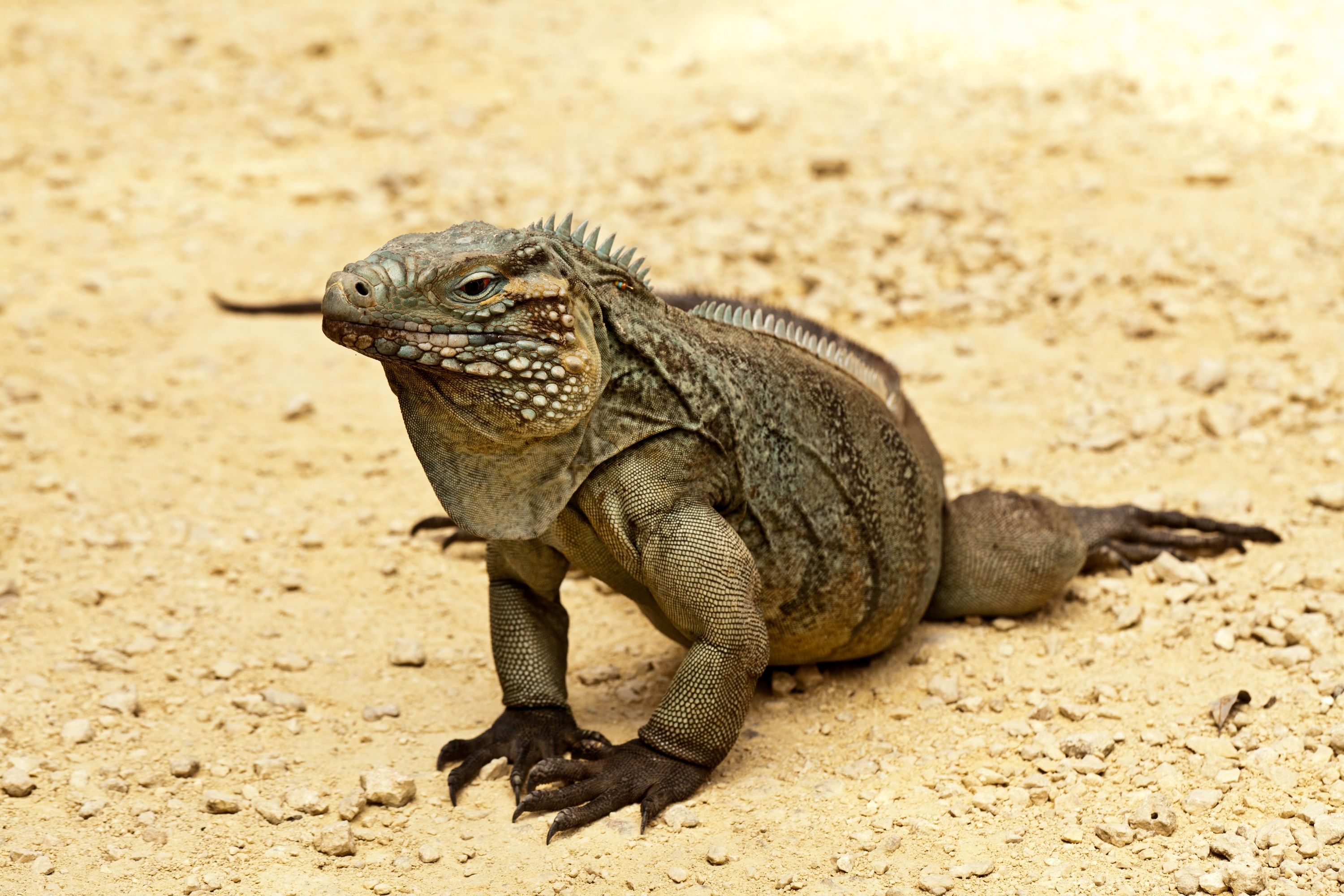Blue iguana
(Cyclura lewisi)

Description
The blue iguana (Cyclura lewisi), also known as the Grand Cayman ground iguana, Grand Cayman blue iguana or Cayman Island rock iguana, is an endangered species of lizard which is endemic to the island of Grand Cayman. It was previously considered to be a subspecies of the Cuban iguana, Cyclura nubila, but in a 2004 article Frederic J. Burton reclassified it as a separate species because according to him the genetic differences discovered four years earlier between the different C. nubilapopulations warranted this interpretation. The blue iguana is one of the longest-living species of lizard (possibly up to 69 years). The blue iguana is the largest native land animal on Grand Cayman with a total nose-to-tail length of 5 ft (1.5 m) and weighing as much as 30 lb (14 kg). This is among the largest species of lizard in the Western Hemisphere. The largest of the Cyclura, its body length is 20–30 in (510–760 mm) with a tail equal in length. The blue iguana's toes are articulated to be efficient in digging and climbing trees. The mature male's skin color ranges from dark grey to turquoise blue, whereas the female is more olive green to pale blue. Young animals tend to be uniformly dark brown or green with faint darker banding. When they first emerge from the nest the neonates have an intricate pattern of eight dark dorsal chevrons from the crest of their necks to their pelvic area. These markings fade by the time the animal is one year old, changing to mottled gray and cream and eventually giving way to blue as adults. The adult blue iguana is typically dark gray matching the karst rock of its landscape. The animal changes its color to blue when it is in the presence of other iguanas to signal and establish territory. The blue color is more pronounced in males of the species. Their distinctive black feet stand in contrast to their lighter overall body color. The blue iguana's eyes have a golden iris and red sclera. The blue iguana is endemic to the island of Grand Cayman. As of 2012 the population can be found throughout the island Grand Cayman excluding the urban areas of Bodden Town, Gun Bay, Seven Mile Beach and West Bay. One theory for how the taxon ended up on the island is that a single female Cuban iguana, C. nubila nubila, with eggs inside her drifted across the sea, perhaps during a storm. Sometimes the Lesser Caymans iguana, C. nubila caymanensis, has been found on Grand Cayman.
Taxonomic tree:







